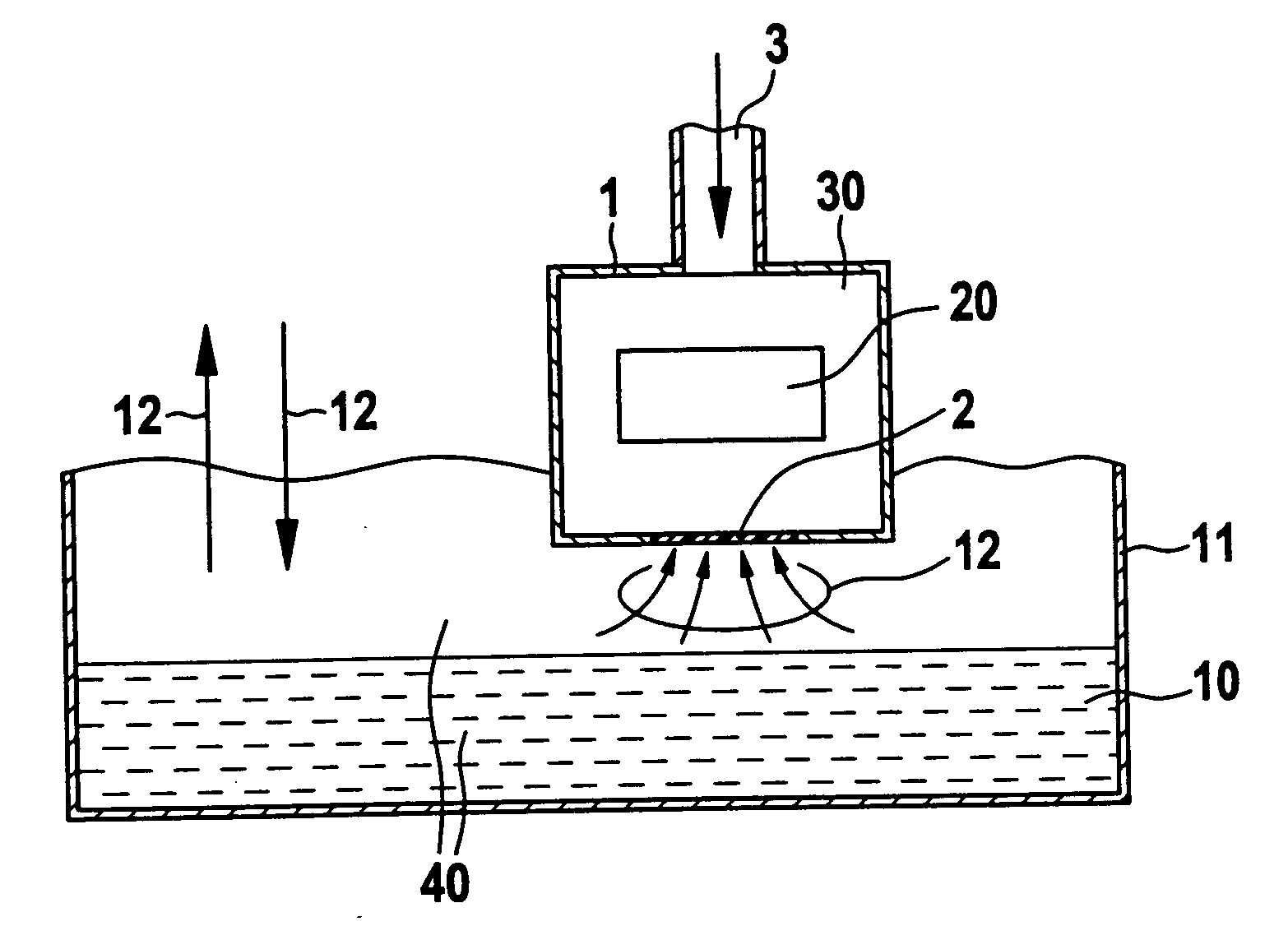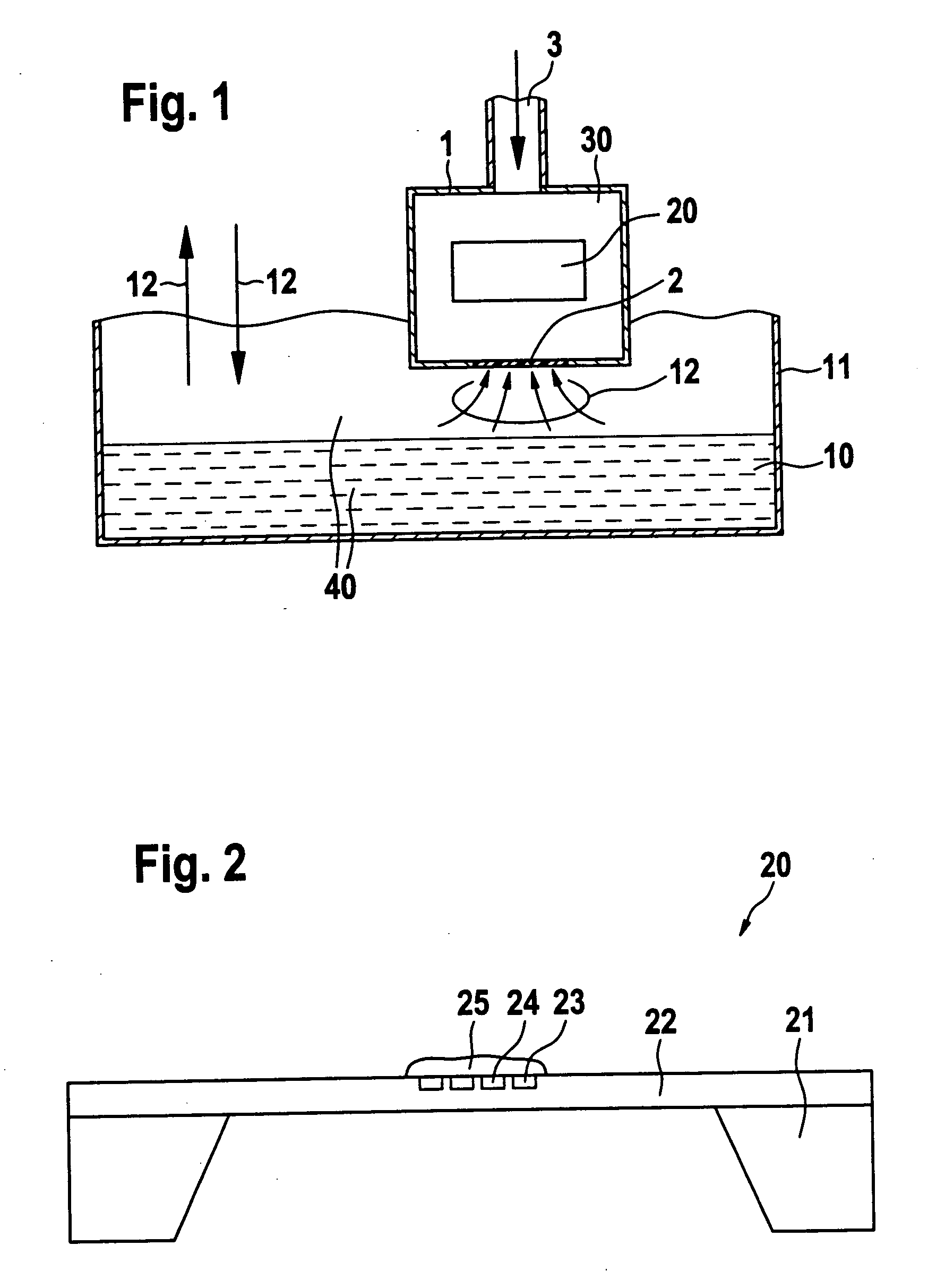Device for determining the condition of oil
a technology for determining the condition of oil and oil, which is applied in the direction of lubrication indication devices, lubrication elements, instruments, etc., can solve the problems of affecting the characterization of this oil property, affecting the reliability of the evaluation of the oil condition, and insufficient knowledge of these variables alon
- Summary
- Abstract
- Description
- Claims
- Application Information
AI Technical Summary
Benefits of technology
Problems solved by technology
Method used
Image
Examples
Embodiment Construction
[0009] FIG. 1 shows a configuration in principle of device 1 according to an example embodiment of the present invention. Device 1 includes a gas sensor 20 which, according to the present invention, is provided in particular as a semiconductor gas sensor, and therefore is also designated in the following as semiconductor gas sensor 20. Gas sensor 20 is shown in greater detail in FIG. 2. Moreover, device 1 includes a gas compartment 30 in which gas sensor 20 is located.
[0010] In device 1 according to the present invention, gas compartment 30 is separated from an oil-containing region 40 by a first membrane 2. First membrane 2 is provided as a so-called oil-repellent membrane. This means that although first membrane 2 is permeable for volatile constituents, which are provided in FIG. 1 with reference numeral 12 and which are present in oil-containing region 40, first membrane 2 is impermeable for oil, which is provided in FIG. 1 with reference numeral 10 in an oil reservoir 11.
[0011] ...
PUM
| Property | Measurement | Unit |
|---|---|---|
| temperature | aaaaa | aaaaa |
| concentration | aaaaa | aaaaa |
| permeable | aaaaa | aaaaa |
Abstract
Description
Claims
Application Information
 Login to View More
Login to View More - R&D
- Intellectual Property
- Life Sciences
- Materials
- Tech Scout
- Unparalleled Data Quality
- Higher Quality Content
- 60% Fewer Hallucinations
Browse by: Latest US Patents, China's latest patents, Technical Efficacy Thesaurus, Application Domain, Technology Topic, Popular Technical Reports.
© 2025 PatSnap. All rights reserved.Legal|Privacy policy|Modern Slavery Act Transparency Statement|Sitemap|About US| Contact US: help@patsnap.com


